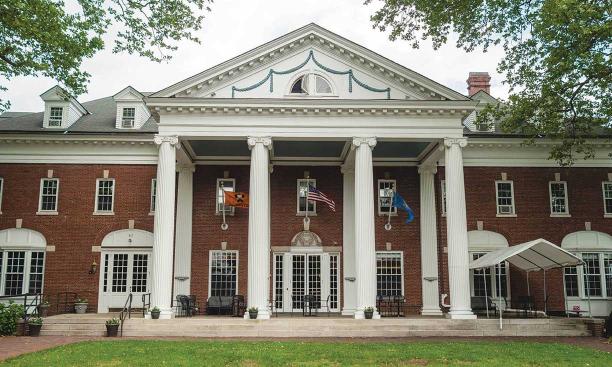
Princeton’s municipal council has unanimously approved the creation of the Prospect Avenue Historic District, spanning from Terrace Club to the Prospect Apartments. Its boundaries encompass all 11 active eating clubs, along with former clubhouses that have found new roles in campus life, such as the Carl A. Fields Center (an expansion of Elm Club) and the Bendheim Center for Finance (which had been Dial Lodge).
The council, which passed the ordinance July 11, said it aims to “protect and enhance historic properties” and “promote appreciation of historic properties.” Property owners within the district will have to undergo a preservation-plan review when making any renovations or additions that are visible from a public right-of-way, according to the ordinance.
The idea of a “club row” historic district was first raised in the 1990s but failed to get much traction until last year, when it was revived during town-gown negotiations over the relocation of 91 Prospect Ave. (formerly Court Club) to clear space for part of the University’s Environmental Sciences and School of Engineering and Applied Science complex. The University and the clubs both supported the new district, which is the 21st of its kind in Princeton.
According to Hap Cooper ’82, president of the Graduate Inter-Club Council, the clubs were unanimously on board. The street’s stately clubhouses are just one part of its historical importance, Cooper said, noting that it has been a “nexus of social interaction” for generations of Princetonians, both in their undergraduate years and when they return to campus as alumni.
The clubs have taken a greater role in celebrating their history in recent years, with help from the Princeton Prospect Foundation, a group devoted to the preservation of the eating-club buildings, and the Historical Society of Princeton. Public tours will be offered twice this fall, on Oct. 8 and Nov. 5, and the clubs will hold open-house events on Nov. 13 and 20, according to Sandy Harrison ’74, board chair of the Princeton Prospect Foundation.
The controversy over 91 Prospect was resolved in October 2021 when the University agreed to preserve three University-owned buildings on Prospect Avenue while also moving the former club from the south side of the street to the north side. Harrison said the situation was a “huge wakeup call” to the Princeton Prospect Foundation and others in the local community who are devoted to historic preservation.
The Prospect neighborhood’s 16 current and former eating-club buildings were built in a 33-year span, starting in 1895, according to Clifford Zink’s 2017 book, The Princeton Eating Clubs. Other colleges have social-club buildings or fraternities and sororities, often clustered together, but the architectural styles and arrangement of Princeton’s eating clubs make them distinctive. “There really is nothing like them in the world,” Harrison said.
